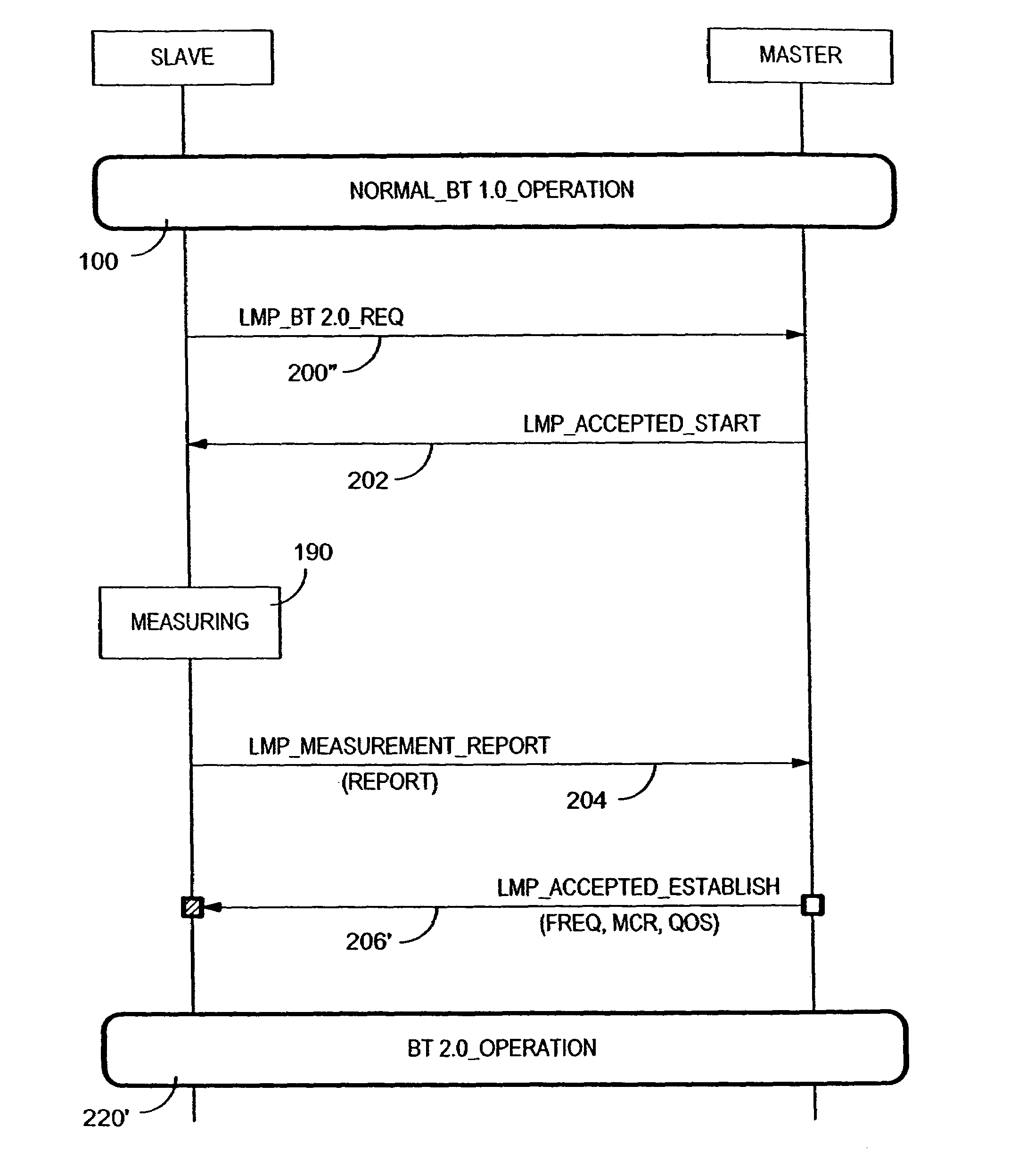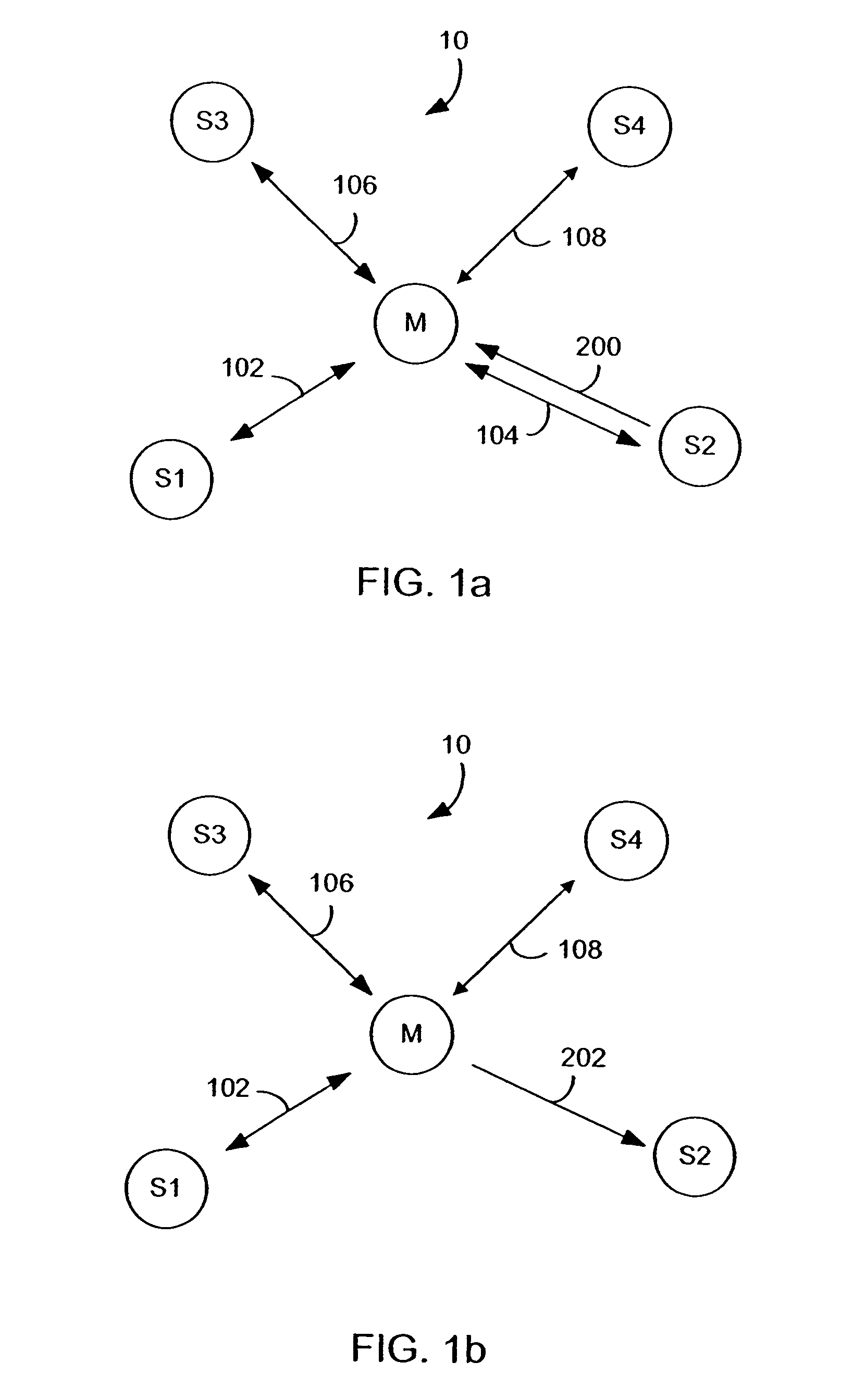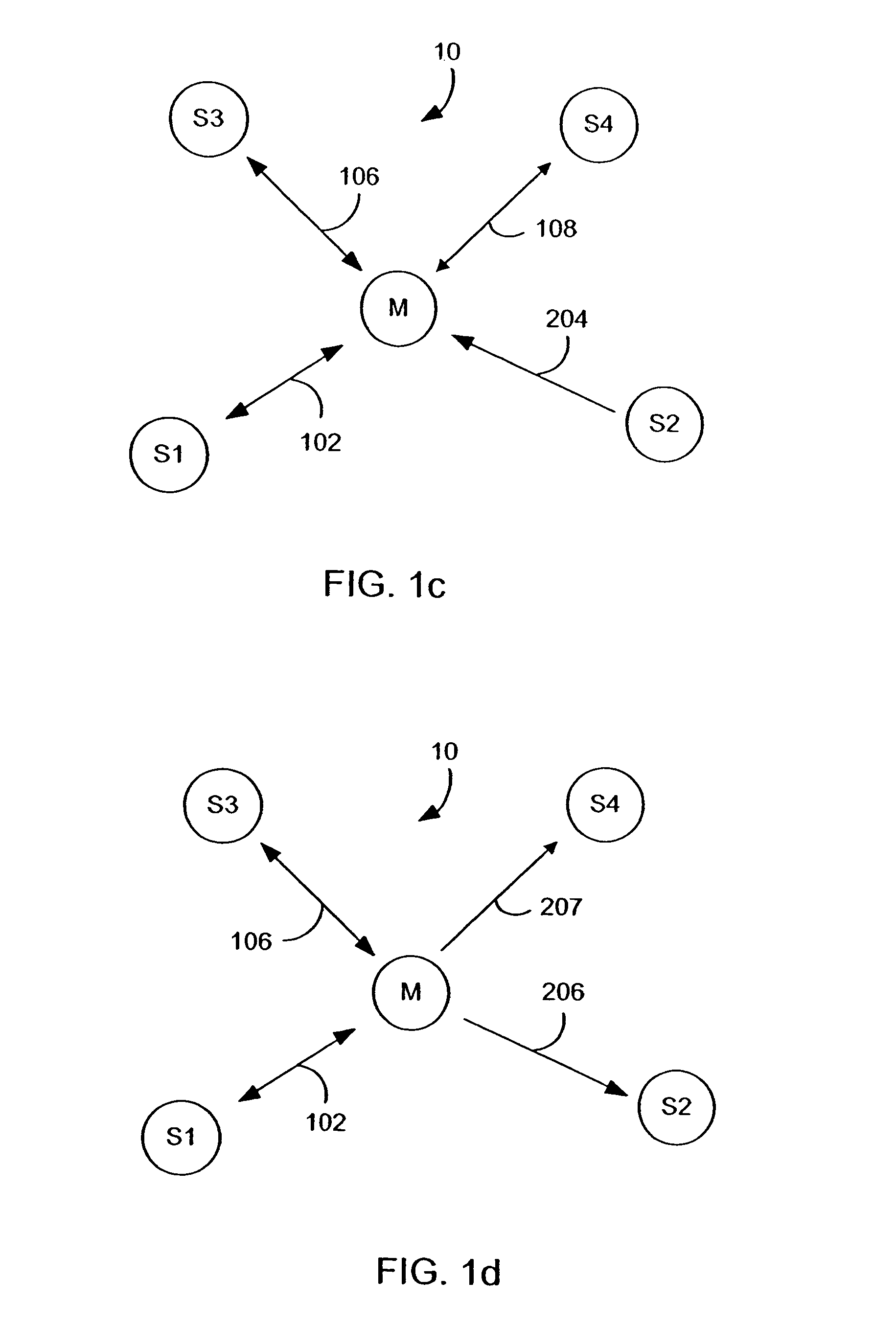Adaptive transmission channel allocation method and system for ISM and unlicensed frequency bands
a transmission channel and channel allocation technology, applied in the field of bluetooth communication system, can solve the problems of ineffective measurement of traffic type, increased received noise, inherent interference caused by multiple different applications, etc., and achieve the effect of ensuring backward compatibility
- Summary
- Abstract
- Description
- Claims
- Application Information
AI Technical Summary
Problems solved by technology
Method used
Image
Examples
Embodiment Construction
[0051]FIGS. 1a through 1g are diagrammatic representations illustrating the establishment procedure of a connection link in a piconet 10 having a plurality of devices M, S1, S2, S3 and S4 which are capable of being connected in a frequency-hopping fashion. The frequency-hopping connection links are well known in the art, and such a connection is referred to herein as a BT 1.0 connection link, associated with the Bluetooth Specification Version 1.0 (BT 1.0). As shown, M is currently a master device and S1, S2, S3 and S4 are slave devices. The procedure described here is limited to the case where a slave device wishes to establish a connection link with another slave device in a non-frequency-hopping fashion. The non-frequency-hopping fashion is herein referred to as BT 2.0. As shown in FIG. 1a, the connection links 102, 104, 106 and 108 between the master device M and the slave devices S1, S2, S3 and S4 are initially established according to the BT 1.0 fashion. At any time, any one o...
PUM
 Login to View More
Login to View More Abstract
Description
Claims
Application Information
 Login to View More
Login to View More - R&D
- Intellectual Property
- Life Sciences
- Materials
- Tech Scout
- Unparalleled Data Quality
- Higher Quality Content
- 60% Fewer Hallucinations
Browse by: Latest US Patents, China's latest patents, Technical Efficacy Thesaurus, Application Domain, Technology Topic, Popular Technical Reports.
© 2025 PatSnap. All rights reserved.Legal|Privacy policy|Modern Slavery Act Transparency Statement|Sitemap|About US| Contact US: help@patsnap.com



